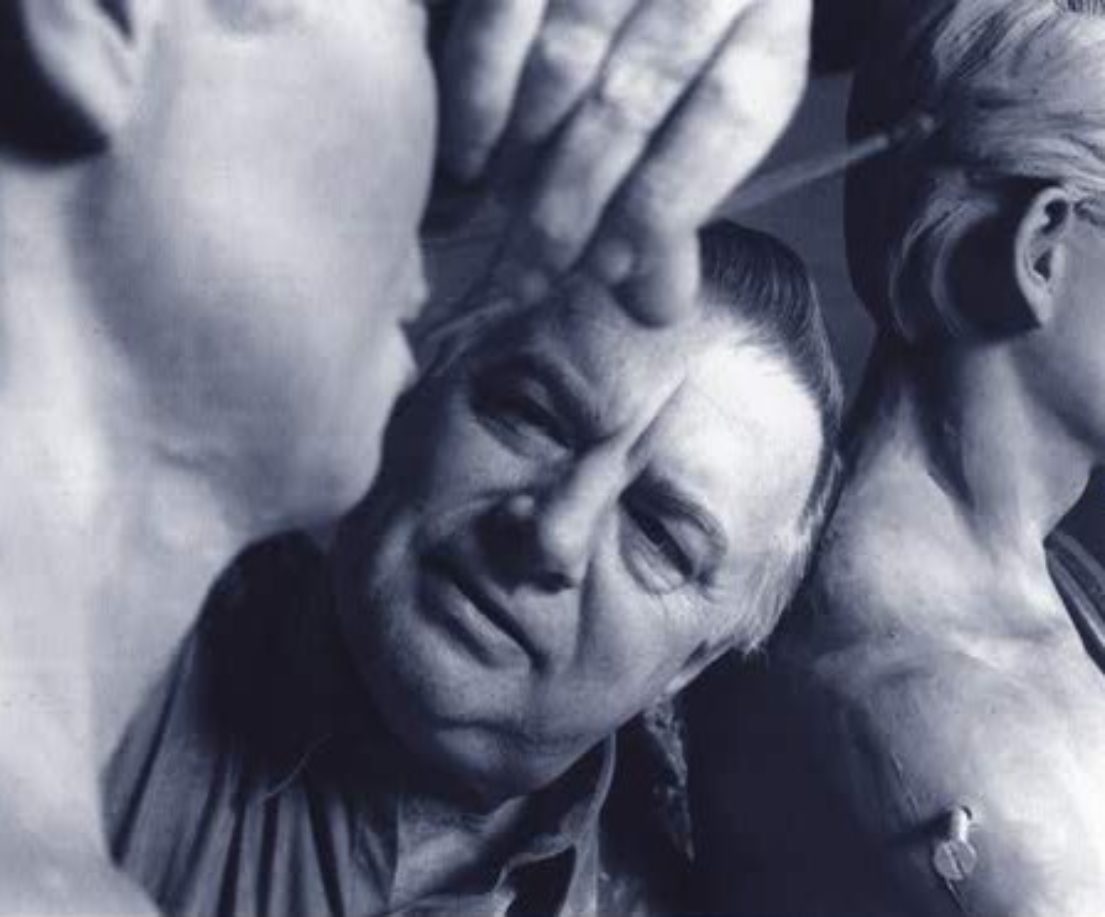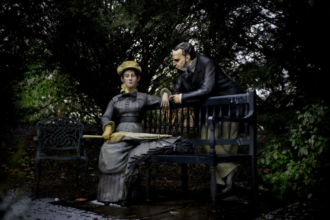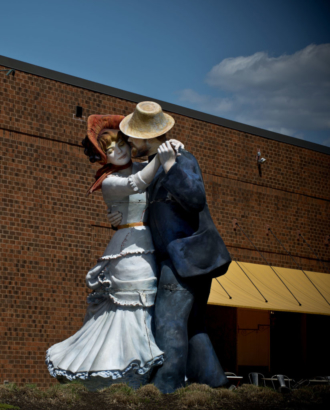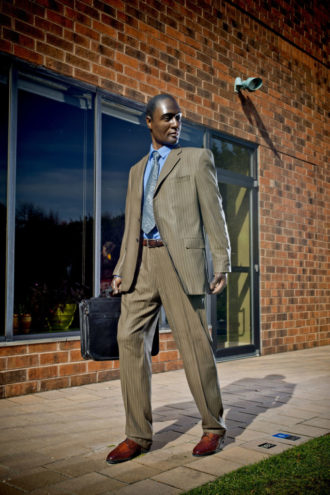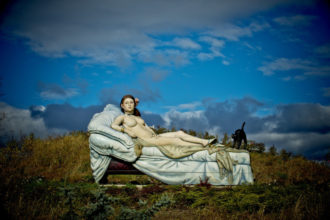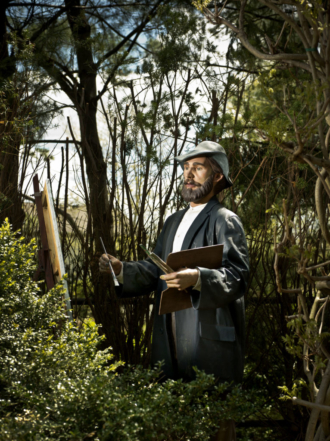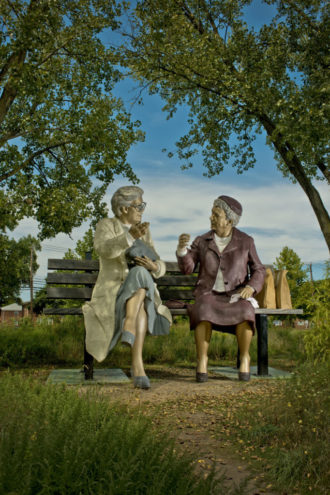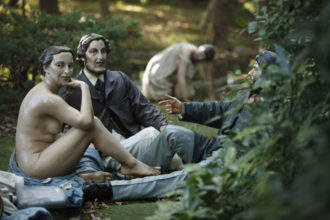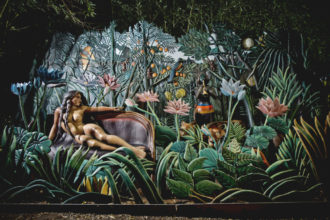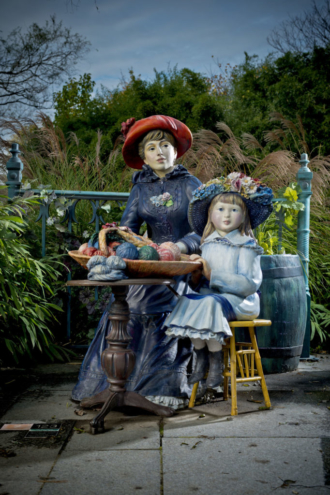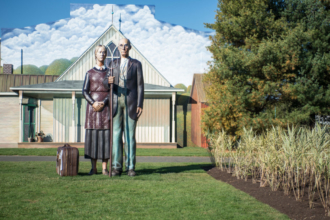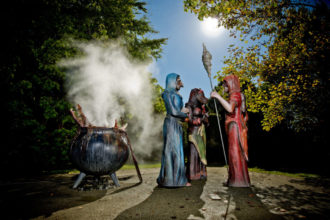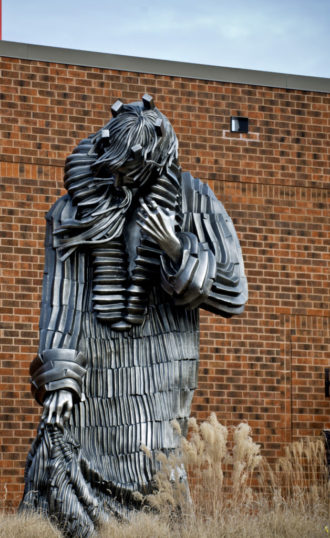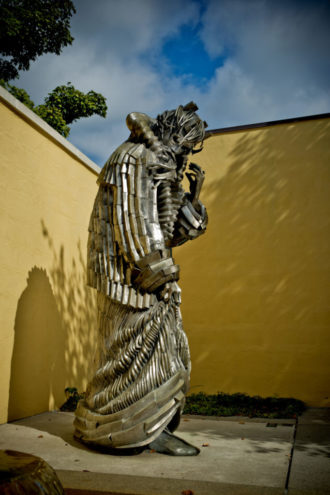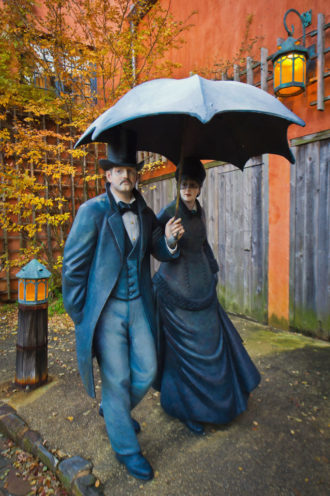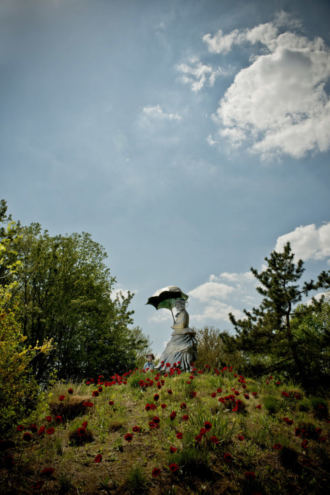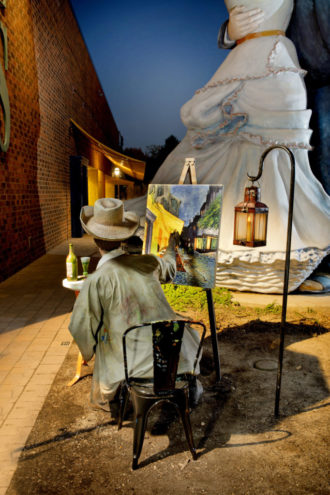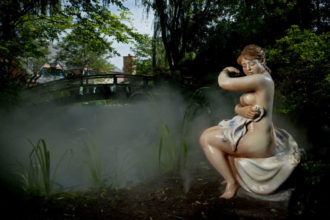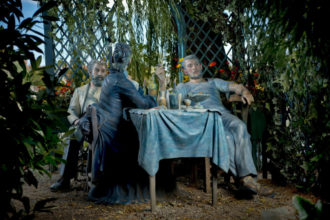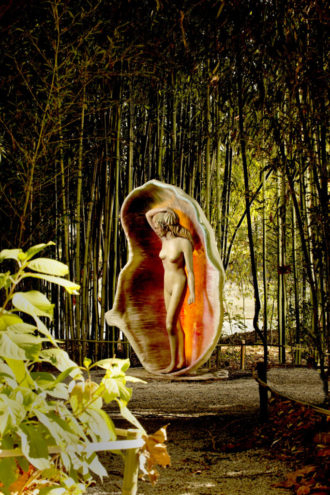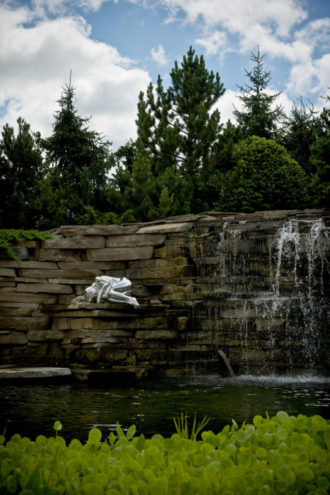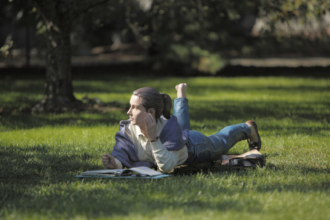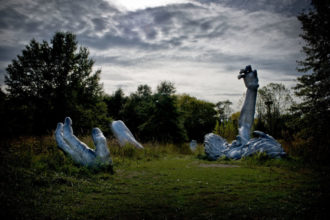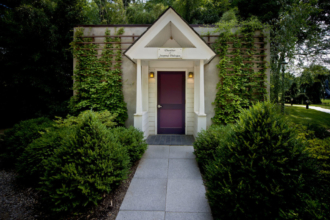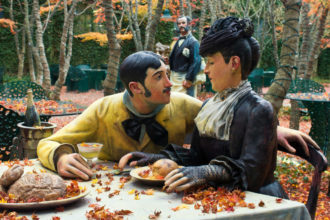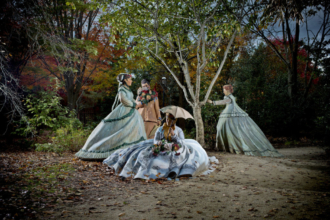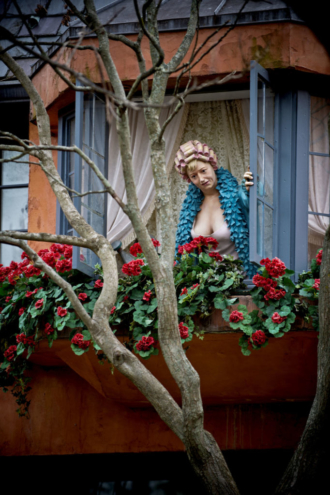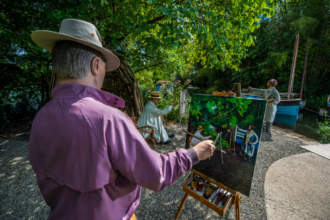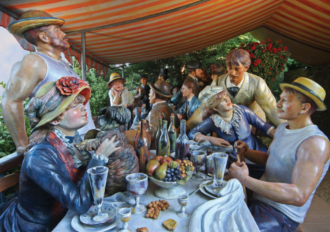Seward Johnson was born in New Jersey in 1930 and subsequently lived in London, Paris, and Bermuda. He graduated from the college preparatory Forman School in Litchfield, Connecticut before attending the University of Maine. Enlisting in the Navy, Johnson spent four years aboard the U.S.S. Gloucester, the only ship hit by enemy fire during the Korean War. Johnson settled in New Jersey to raise a family with his wife and now spends his time in New York City, Nantucket and Key West.
Johnson’s earliest artistic efforts were in painting but as his aesthetic developed, he gravitated more toward sculpture. Having no formal training beyond a series of classes in Cambridge, MA, his first cast work of sculpture won the Award in Steel Art competition which included 7,000 entries. Now famous worldwide for his life-size bronze figurative sculptures, Seward Johnson’s works are exhibited internationally and are included in private collections, museums, and public art collections too numerous to mention. Johnson’s body of work consists of three distinct series: the Celebrating the Familiar man on the street works, the collection called Icons Revisited based upon images in the collective unconscious, and the Beyond the Frame series inspired by Impressionist paintings. He has completed a series of over 30 works based on Impressionist and Post- Impressionist masterworks. “I want my work to disappear into the landscape and then take a viewer by surprise. After he gets over the shock of being fooled, it becomes an emotional discovery. Then he owns the sculpture. People often revisit their favorites. They become like friends,” Seward Johnson
In addition to Johnson’s head turning sculptures, the artist’s generosity of spirit is evident in his many philanthropic endeavors, of which the founding vision for Grounds For Sculpture is one of the most highly regarded.
“…it’s easy sometimes to forget the simple things that give us pleasure. If we open our eyes, life is marvelous. The human spirit triumphs, if only for moments in a day. I try to have my work call attention to those moments.” Seward Johnson
